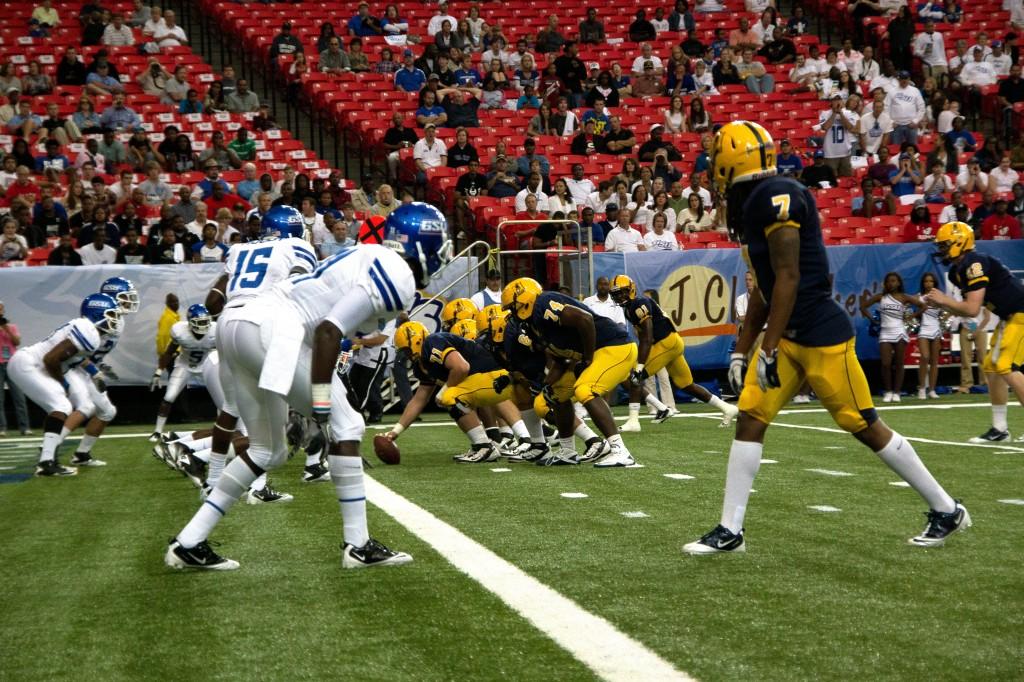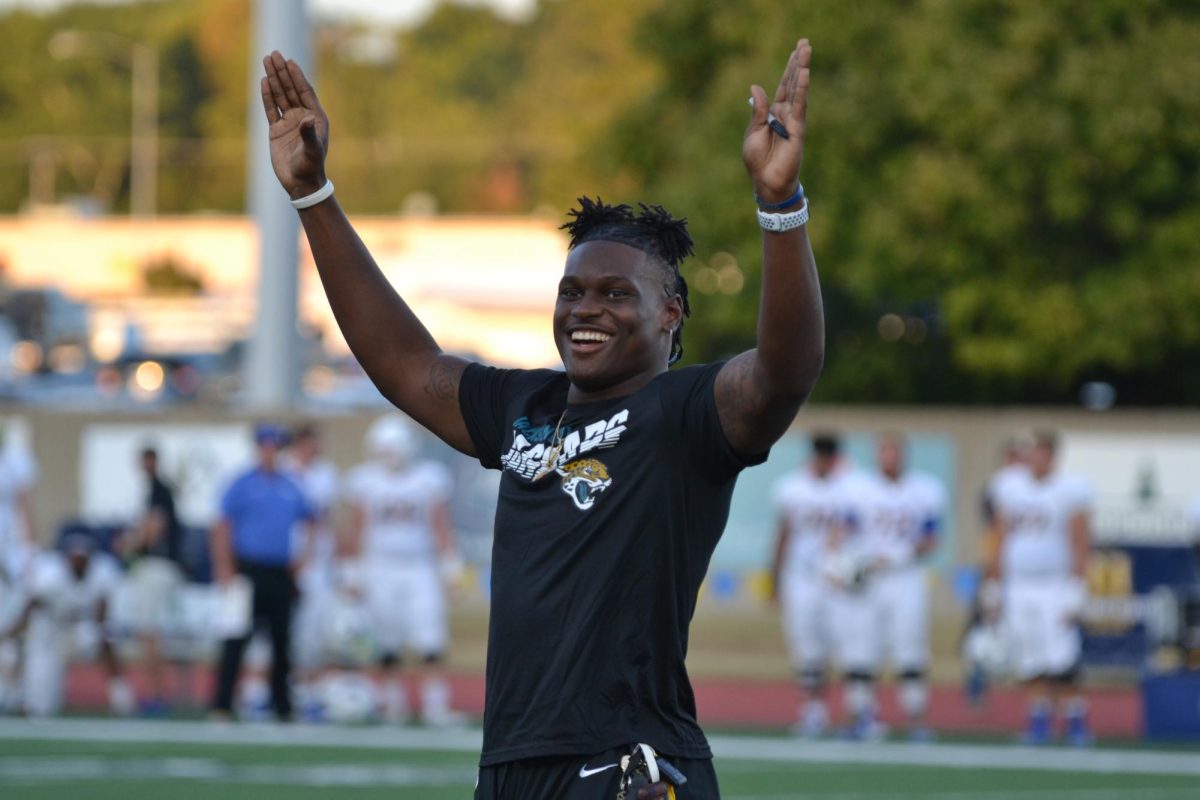
From a distance, the entire offense looks highly intricate and downright confusing at times.
Screens. Verticals. Crossing routes. Slants. Stop-and-go’s. Multiple receiver sets. No huddle. Breakneck speeds with breakneck plays designed to keep a defense unsettled and unprepared for the next snap.
Known as the infamous “Hatch Attack” around the league and at Murray State, Head Coach Chris Hatcher said his offense is anything but complicated, using unique designs and trickery as tools to confuse defenses into thinking there is more going on than meets the eye.
“I like to describe it as basketball on grass,” Hatcher said. “We’re going to play a very up-tempo game and try to get the ball in space to people who know how to score.”
A quarterback at Valdosta State in his playing years, Hatcher ran the same offense behind center as he employs now as a coach. Though he has made his own twists and tweaks to the playbook, Hatcher said the offense is a derivative of the “Air Raid” style, typically including multiple wideouts, a running back to the right or left and a shotgun formation for the quarterback.
“We want to just push the ball, whether it’s running the ball, throwing short or throwing deep, we’re just trying to attack the open grass on the defense,” he said. “Above all else, it’s a simple scheme and you have to adjust to the talent you have.”
While the high-flying offense receives much credit, Hatcher said one of the most important elements of the scheme is the run game. The multiple wide receiver formations spread out the defense and force out of the box to protect against the pass, giving running backs room to run around the outside and up the middle.
“You’ve got to have a running back that can catch the ball, and we don’t care how many carries he gets,” he said. “It really matters how many touches he gets. We want to get him a minimum of 20-25 touches a game. We’ve always had a 1,000-yard rusher because we spread the defense out and make them play sideline to sideline and it just opens up the middle.”
Offensive coordinator Mitch Stewart, who also played quarterback at Valdosta State, has been working with Hatcher since they both coached at Georgia Southern.
As one of the youngest coordinators in FCS, Stewart has orchestrated top-ranked offenses over the past two years for the Racers. He said the Hatch Attack, along with the Racer athletes, has played a big part in the success.
“We’ve been very fortunate to have the quarterback that we’ve got and some guys around him and some guys up front who can protect him,” Stewart said. “We’ve got some good backs and some good wideouts and we’ve been fortunate with it.”
By using key personnel and a rotating wide receiver corps, Stewart said this made it possible to keep players fresh and ready on the field for the anticipated long drives and unique plays designed to get the ball to the end zone.
Like Hatcher, however, Stewart said it all came down to simplicity and execution.
“We’re going to be really, really base,” he said. “We’re only going to do a few things through the course of a game. We’re going to dummy it up so it will look like a bunch, but at the end of the day we’re only going to run 20-25 different plays because we’re going to try and play at a rate of speed that’s going to allow us to do that.”
For the Racers, speed is the name of the game.
Story by Edward Marlowe, Staff writer


























































































